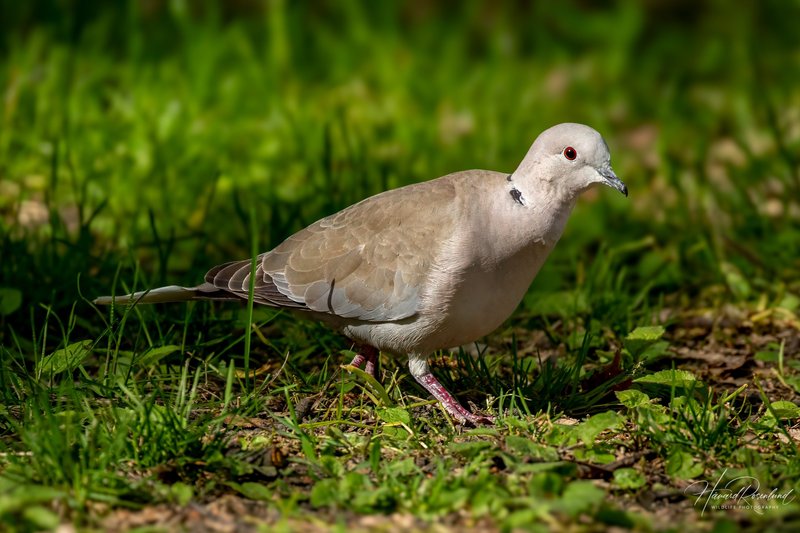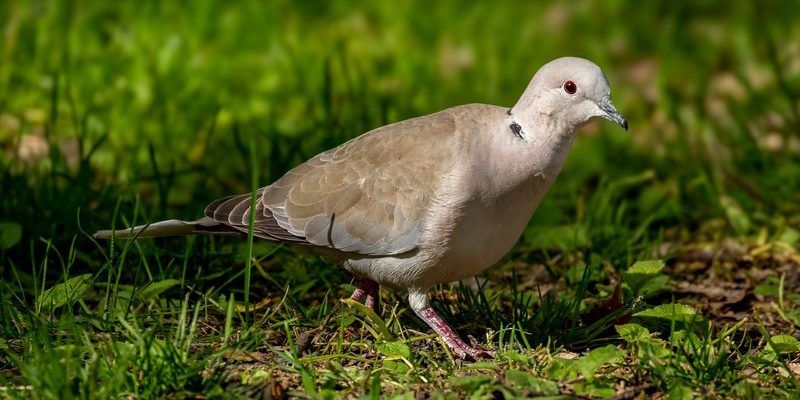
Let’s dive into their story, exploring how the Eurasian Collared Dove has evolved over time and what makes it so special. From their initial habitats to their remarkable adaptability, you’ll discover why these birds are more than just a pretty sight in your backyard.
The Origin of the Eurasian Collared Dove
The Eurasian Collared Dove, or *Streptopelia decaocto* if you want to sound fancy, originally hails from the warm climates of Europe and Asia. Think of them as the neighborhood newcomers who decided to bring a bit of their home charm to different parts of the world. They first appeared in the wild across the Indian subcontinent, stretching all the way to the eastern Mediterranean and down to North Africa.
These doves are easily recognized by the distinctive black “collar” on the back of their necks—hence the name. They thrive in various environments, from woodlands to urban areas, and their adaptability has played a huge role in their success. The species is part of the larger dove family, which includes many others like the Mourning Dove and the Rock Pigeon. While they share some similarities, the Eurasian Collared Dove stands out with its unique features and behaviors.
The Journey to the Americas
So how did these lovely doves make their way to the Americas? Here’s a bit of history that reads like an adventure novel. In the 20th century, specifically around the 1980s, Eurasian Collared Doves began showing up in the Bahamas, likely due to human introduction. From there, they took off like kids on a road trip, spreading across the United States and Canada at an astonishing rate.
You might be wondering what prompted this migration. The doves found a variety of suitable habitats in North America, especially in urban areas where they could easily find food and shelter. Their presence in cities is a delightful surprise for many residents, as they often adapt to human environments with ease. As they spread westward, birdwatchers celebrated their arrival, noting how these doves easily integrated into the local wildlife scene.
Behavior and Adaptability of the Eurasian Collared Dove
Eurasian Collared Doves are known for their extraordinary adaptability. They are like the ultimate blend of street-savvy and home-loving doves, making them fit in just about anywhere. In urban settings, they’ve learned to navigate around buildings, cars, and even people! You’ll often find them roosting on power lines or foraging for food in parks and backyards.
These doves are social creatures, often seen in pairs or small groups, and they have a curious nature. They’re not shy to approach feeders where they can feast on seeds, grains, and even scraps left behind by humans. Their cooing sounds are part of their courtship ritual, making them quite the charming companions in nature. Observing their interactions can be a delightful experience, as it showcases their social dynamics and adaptability in various environments.
The Eurasian Collared Dove’s Role in the Ecosystem
The Eurasian Collared Dove isn’t just a pretty bird; it plays an important role in its ecosystem. By helping with seed dispersal, it contributes to plant growth, ensuring a healthy environment for other wildlife. As they forage for seeds, they inadvertently help plants spread their seeds across various areas, promoting biodiversity.
Moreover, as a prey species, these doves serve as a food source for birds of prey and other predators. This balance helps maintain the food web in their habitats. So, when you see a Eurasian Collared Dove, remember that it’s part of a larger ecological dance—contributing to the balance of life while charming everyone around it.
Challenges Facing the Eurasian Collared Dove
While the Eurasian Collared Dove has thrived in many areas, they face challenges that threaten their survival. Habitat loss due to urban expansion and agricultural development poses a significant risk. Imagine having to move from your cozy home because the neighborhood is being bulldozed— it’s not easy for these birds either!
Additionally, climate change is creating shifts in weather patterns that affect their food sources and breeding success. They may also confront increased competition for resources from other bird species. Conservation efforts are important to ensure that these lovely doves continue to thrive in their habitats, so understanding their needs is crucial.
How to Attract Eurasian Collared Doves
If you’re a bird lover and want to attract Eurasian Collared Doves to your yard, it’s quite simple! Start by creating a welcoming environment that provides food, water, and shelter. Here are a few tips to get you started:
- Feeders: Set up bird feeders with sunflower seeds, millet, or corn. They love a good feast!
- Water Sources: Adding a birdbath or shallow water dish can entice them to stop by for a drink.
- Shelter: Planting shrubs or leaving some natural vegetation can offer safe spaces for them to nest and roost.
With these simple additions, you’re bound to enjoy the presence of these charming doves while contributing to their wellbeing.
From their intriguing origins to their satisfying adaptability, the Eurasian Collared Dove is a true testament to the beauty of nature’s resilience. Whether they’re cooing softly in your neighborhood or flitting about in the park, their presence brings a sense of peace and joy. With our understanding of their history, behaviors, and needs, we can appreciate these lovely birds even more and help ensure they thrive in the environments we share. So, the next time you hear that gentle cooing sound, take a moment to enjoy the remarkable journey of the Eurasian Collared Dove.

